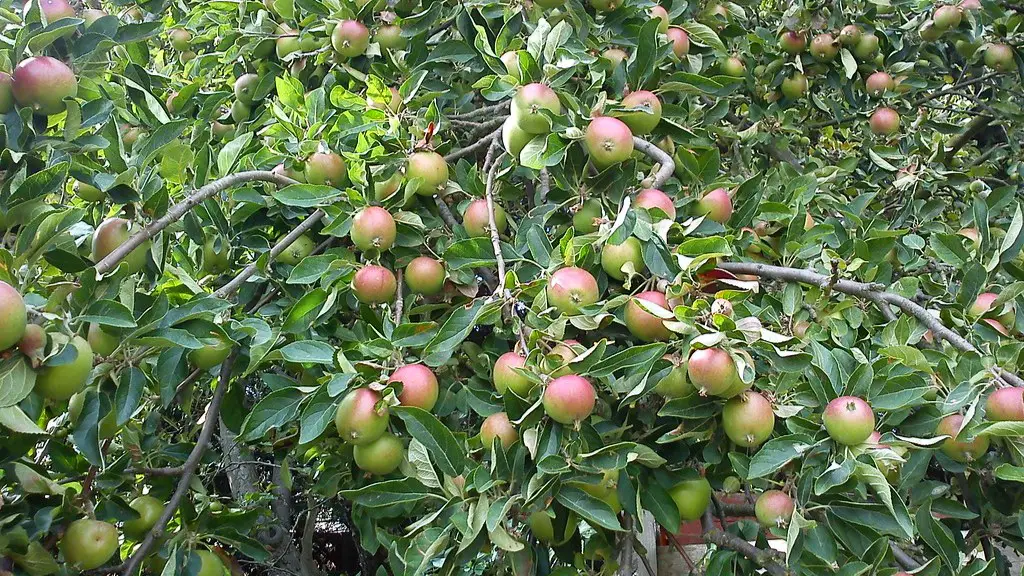Check the Soil Before Repotting an Avocado Tree
To ensure the survival of your avocado tree it is important to know when to repot. It is not recommended to repot a mature tree every year or two, but an insufficient sized pot or bad soil can lead to a tree not reaching its full potential.
When do you know if it is time to repot your avocado tree? A common sign that your tree needs repotting is when the roots appear to be growing out of the drainage holes or if the soil no longer looks the same color and texture as it did when you first planted it.
Expert horticulturists suggest that if the roots are pushing their way out of the pot, it is time to repot your tree. The natural growth of the tree’s roots also change after about three years in the same pot. At this time, the landlord should be repotted.
Good Potting Soil and Containers for an Avocado Tree
It is important to use a soil that is well suited for the tree’s needs. Many nurseries have special potting soil designed for avocado trees specifically. It is important that the soil has good drainage, so when choosing a potting soil for your avocado tree, check for the “porous” label that indicates it will hold water, but also drain well.
The pot chosen should also have a necessary drainage system. The size of the container should be at least twice the size of what your tree was in before, but be careful not to go too big as the soil needs to dry out completely in between waterings.
Examining a Tree Before Repotting
When you are ready to repot your tree, you should first check it for any signs of disease or pests. Be sure to trim back any affected leaves and then carefully move the tree from its existing container into the new pot. Once in its new pot, fill the pot with soil and then give it a good soak.
Examining a Tree After Repotting
After repotting the avocado tree, it is important to be mindful of the amount of water it gets. When repotting the tree, the roots will be disturbed, and the tree may need extra water, sometimes even twice as much as it usually requires.
It is important to watch for any signs of stress such as wilting leaves or drooping branches. This could indicate that you may have either over or under watered the tree.
Finding the Right Home for Your Avocado Tree
If you are concerned about the size of the pot, you can always opt to place the avocado tree into a larger pot and then in planting it, move the soil away from the sides of the pot.
When finding a new home for your tree, you want to pay attention to both the size of the pot and the soil it is in. It is important that the tree is allowed to spread out its roots and the soil needs to be well draining. It is also a good idea to check the soil for any signs of pests or disease.
Seasons and Repotting an Avocado Tree
It is best to repot an avocado tree during its dormant season, which usually occurs during the winter months for most types. This is the time when the tree does not require as much water and the roots will not be disturbed too much by the repotting.
If the roots have grown to much for the pot, it is best to prune them back a bit before repotting. Once the tree is in its new pot, it should be placed in a brightly lit area and watered regularly.
Supplying Nutrients to an Avocado Tree
When planting the tree, it is a good idea to add a bit of fertilizer to the soil. This will give the tree a head start when it comes to nutrient uptake.
It is important to use a fertilizer that is high in potassium and nitrogen for your avocado tree. The best way to ensure that your tree is getting the nutrients it needs is to fertilize it regularly and follow the instructions provided on the fertilizer’s packaging.
Effects of Climate and Weather on an Avocado Tree
The weather and climate can have a huge impact on how well an avocado tree will grow. Trees that are grown in a warm location and that receive adequate sunlight are likely to fare better than those in colder environments.
Avocado trees will do best in areas that have a moderate climate, with warm days and cool nights. It is important to protect the tree from extreme temperatures, and it may need to be moved indoors if temperatures are too hot or cold.
Insects and Diseases Affecting an Avocado Tree
Your avocado tree can be susceptible to a number of insects and diseases. Some common ones are scale, root rot, and spider mites. It is important to inspect the tree regularly for any signs of pest infestations or diseases.
If an infestation is found, the tree should be treated as soon as possible. Insecticides and fungicides can be used to help treat pests and diseases, as well as regular inspections and pruning.
Harvesting an Avocado Tree
Avocado trees usually begin to produce fruit within 3-4 years, and the fruit will ripen within 3-11 months depending on the variety. Be sure to check the fruit regularly to be sure it is ripe and ready to be harvested.
When the fruit is ready to be harvested, it should be removed from the branch very carefully. It is best to use pruning shears to do this, as they are much gentler than trying to twist the fruit off of the branch.
Caring for an Avocado Tree After Harvest
After harvesting, it is important to continue to care for the tree by fertilizing it and continuing to keep an eye out for signs of pests and disease. The tree will also need to be pruned and watered regularly to ensure its health and the production of more fruit in the future.
It is also important to monitor the soil moisture level to ensure that the roots are not standing in standing water. The soil should be allowed to dry out somewhat between waterings.
Curing and Storing Avocado Fruits
Once you have harvested your avocado fruits, they must be treated with care. This means that they should not be left out in direct sunlight and they should not be allowed to freeze.
The fruits should then be kept in a cool, dry place until they are ready to be eaten. To speed up the ripening process, the fruits can be placed in a paper bag with an apple or banana.
Conclusion
Repotting an avocado tree is a necessary task for the healthy upkeep and growth of the tree. It is important to use the right soil, the right size of pot, and to check the roots, pest, and disease before doing so. Additionally, the tree should be moved around to avoid extreme weather conditions, fertilized regularly and harvested with care. Following these steps will ensure that your tree thrives and produces great fruit.

